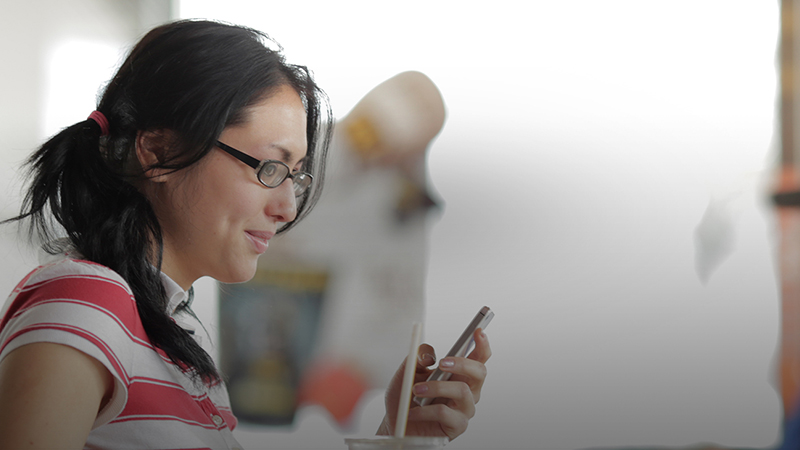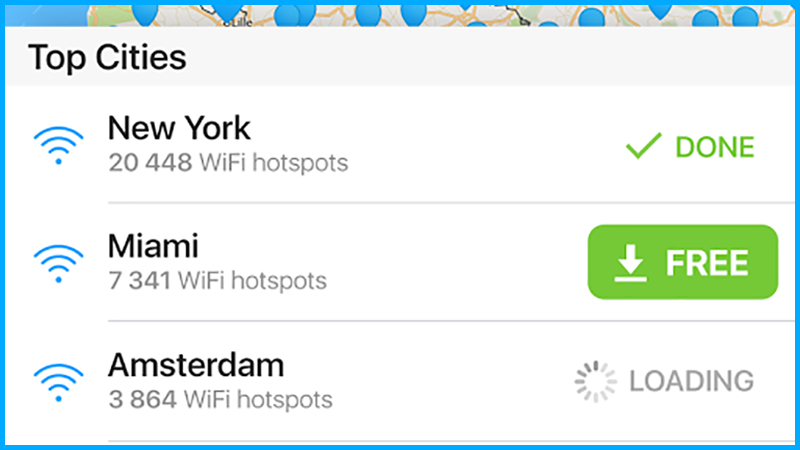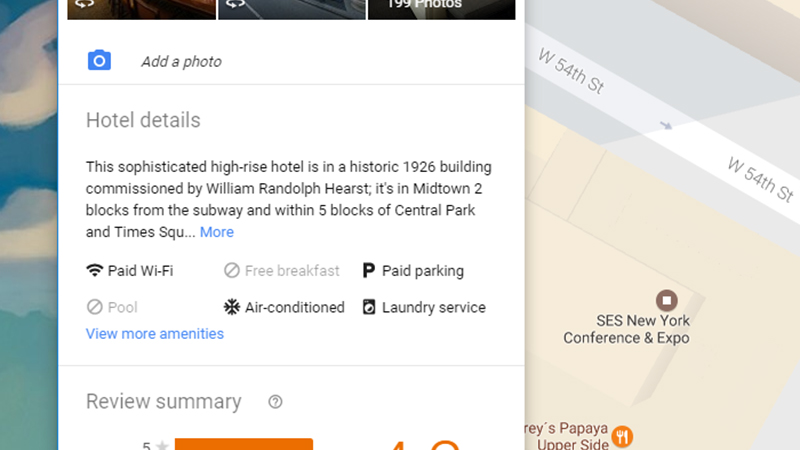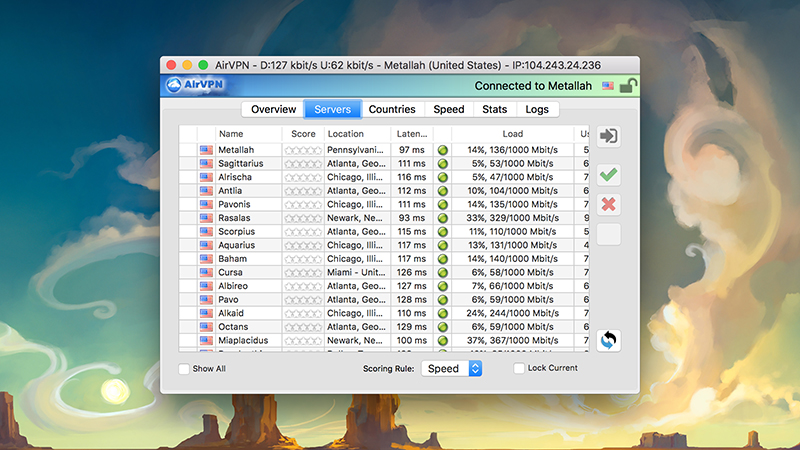Venture out beyond the reach of your safe, familiar home wi-fi network and getting online can sometimes be a challenge. Here’s how to seek out the strongest and most well-protected wireless networks in the terrifying cold of the real world.
Image: Bonnie Kittle/Unsplash
Fortunately, a growing number of bars, restaurants, shops and cities now offer free wi-fi — though these tantalising pools of connectivity vary in terms of their speed and reliability. Anywhere you can get food and drink, or buy something, or stay the night, is a good place to start in your search for free wi-fi (or at least, no-extra-charge wi-fi).
For restaurants — in the US at least — long-standing and mostly reliable options include McDonald’s, Pizza Hut, Starbucks, Applebee’s, Panera Bread, Dunkin’ Doughnuts, Arby’s, Burger King, Denny’s, IHOP, Wendy’s, Subway, and KFC. In some cases, you’ll have to give up a bit of personal info, like a date of birth and an email address, to get online. You don’t have to like the food, but if a $US1.50 fountain soda gets you that sweet, sweet connectivity, who’s complaining?

Image: McDonald’s
In terms of stores, you can get hooked up at the Apple Store, Best Buy, Target, Staples, Whole Foods, Barnes & Noble, and Macy’s, to give just seven examples, and the list is getting longer all the time.
An important note that applies throughout this post: No matter how rushed you are, check the terms and conditions before connecting: you could be giving up more than you think. Even if you don’t have to supply an email address of phone number to get online, the device you’re browsing with can still be logged and associated with your location, which may or may not lead to more targeted advertising down the line, for example.
If you’re not near a popular high street store or stopping for food and drink, then you’ve still got options. More and more Texas. Speeds often lag behind those you’ll get in stores and restaurants, just because of the nature of roving wireless connections, but they will do to check your email on the go.
Other public places you can tap up for free wi-fi include parks, libraries, and museums, though again read through the terms and conditions before connecting.

Image: Comcast
As if the free wi-fi scene weren’t crowded enough, municipalities and carriers are getting in on the act too. We’ve previously reported on schemes in New York and the number of cities throwing open wireless access for the masses is increasing fast, from Kansas City to Los Angeles. Speeds aren’t universally great, but the trend is only going to go in one direction, and in the busiest cities it will soon be unusual to be stood somewhere without at least one wi-fi hotspot to pick from.
You might also be able to log on courtesy of your carrier. AT&T and Verizon have tens of thousands of Wi-Fi hotspots dotted around shops and public buildings, so look out for the label that matches your current carrier of choice. Verizon even has a hotspot directory so you can check coverage before you set out.
If your cellular provider doesn’t have you covered then maybe your cable company does — Comcast has millions of hotspots to pick from across the country, although this includes customers who’ve set up their residential router to offer a public guest mode. Comcast also provides an app to make it easier and safer to get online, with built-in encryption included. TWC, meanwhile, says its hotspots number in the thousands, and again you can connect via an app.

Image: Wi-Fi Map
The list of public wi-fi spots is growing all the time, and in a few years wireless access will no doubt be taken for granted. Rather than consulting extensive lists on the web, it’s probably easier to just wander around the area you find yourself in and looking for wi-fi notices (or just asking inside).
Certain apps are around to help you in your search. The iOS and Android apps by OpenSignal help you test cellular coverage as well as hunt for wi-fi hotspots, Wi-Fi Map can direct you to hotspots all over the world, and Instabridge is committed to building a community of internet-sharing users to give you even more options for getting online. Meanwhile, the website Wi-Fi Free Spot has a useful directory of access points broken down by US state.
As for hotels and motels, it’s now more unusual to find a chain that doesn’t let you get online, although a lot of places will still charge you for the privilege. Some hotels now have two tiers of internet: One for the normal people and one for business users who are happy to pay a bit more, which may also get you some extra speed and extra security on top. Google Maps will tell you at a glance which hotels have free wi-fi and which don’t.

Image: Screenshot
Don’t assume staying at a posher hotel means you’re safer though — eavesdropping hackers know that there are richer pickings at richer venues, and you’d be surprised at how far down the list of priorities wireless security sometimes is for hotels.
Staying Safe
That brings us on to the issue of safety, which is something you should think about whether you’re getting connected in the park or in a five-star penthouse suite. Any network you’re sharing with hundreds of other users is inherently less secure than the one you have at home where you control access.
You’ve got two issues to think about: the personal data you’re giving up in return for getting online, and the chances of someone listening in on your activities. As the number of wi-fi access points out there goes up into the millions, we can’t give you definitive answers for both these questions for every hotspot, but we can talk about some general points to bear in mind.

Image: Starbucks
In terms of privacy, you’re probably better off using some municipal wi-fi than a network provided by a company, which will always (one way or the other) be out to make money from you — that could be by encouraging you to stick around and buy more coffee, but it could be by selling your data on to the highest bidder.
As annoying as it seems when you just want to quickly check your email, if you want to stay protected you need to carefully read through the terms and conditions that pop up before you log on. If you’re in doubt, don’t connect, and be wary of wi-fi access points that ask for a lot of personal details.
You can limit your exposure by just connecting to wi-fi in one particular fast food chain rather than several, for example. Connecting via your carrier or cable company is probably the safest option, if it’s available, because you’re not giving up an extra data or signing up with a new service. Whether your carrier or cable company is using your data responsibly is another matter of course.

Image: Screenshot
As for the other issue of data hacking, again it’s hard to be specific without being privy to the security setups at all these different places. Broadly speaking, the busier the location and the more people connected to the same hotspot, the less safe you are, though whether you’re better off getting online in a hotel lobby or the coffee shop next door is difficult to say — it depends how well those networks have been configured.
Hackers will certainly be attracted to the places where the possible gains are maximized, so think areas where there are the highest number of people with the least amount of time to worry about security warnings or error messages. Of course you’re also relying on company employees not to be sniffing around what you’re doing as well. If in doubt, read up on the Wi-Fi provider’s security policies in advance.
As we’ve discussed before on Field Guide, taking some straightforward steps to protect yourself is probably easier than weighing up which public wi-fi network is the safest. If you want to reduce the risk of other people snooping on your data then getting a VPN installed is pretty much essential. When you do get online on public wi-fi, you should also be wary of entering private details in site that aren’t displaying the green padlock in your browser (showing you’re connected to a secure and encrypted site).

Image: Gizmodo
The usual rules for staying safe on the web still apply, as do the rules for protecting your privacy. Make sure your OS and browser are both right up to date, steer clear of suspicious-looking pop-ups, and use two-factor authentication where you can. Also, make sure you log out of public wi-fi networks once you’ve finished using them.
In general we’d advise against doing anything on public wi-fi that you don’t want other people to see, just to be on the safe side — in other words, check the sports scores and Twitter while you’re out and about and leave your internet banking til you get home. If you do have to work, keep your online activities to a minimum. None of this is guaranteed to keep you safe on public wi-fi — nothing really is — but it will minimise the risks.
As wireless infrastructure gets upgraded and data plans improve, hopefully the search for public wi-fi won’t be so important in the future, but for how you’ve got a host of different options to pick from. If your carrier’s network and your phone plan can cope, there’s always the option of tethering your laptop to your phone to get online too.
